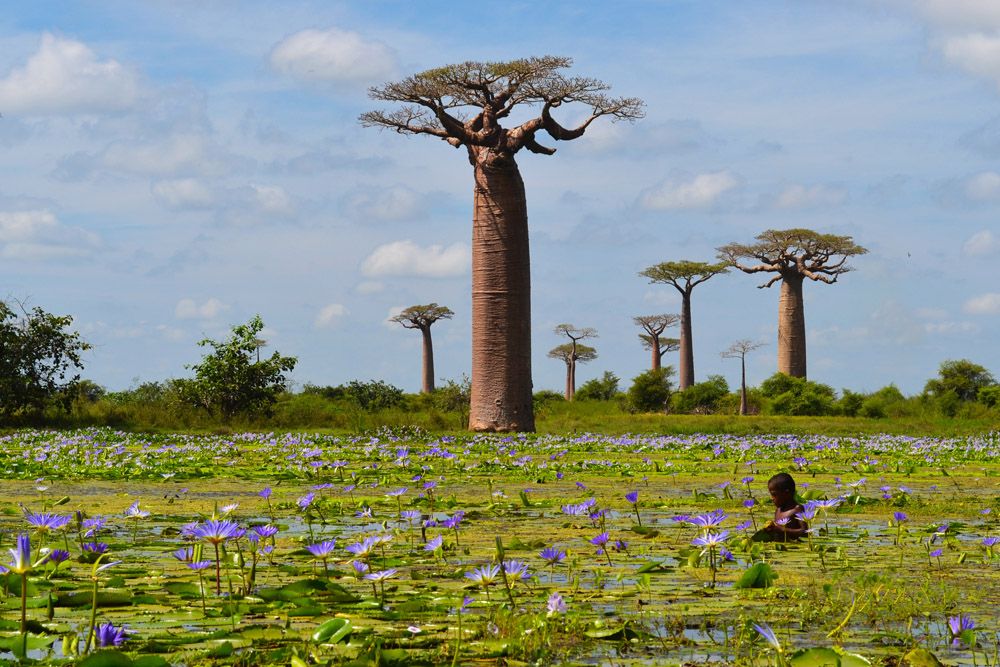Wild Beauty: Winning Ecology Photos Feature Sunbirds and Zebras

The winning photos from a recent ecology photo contest prove that Mother Nature is always ready for her close-up.
In one photo, a small bird sucks nectar from an exotic flower. In another, a zebra munches vividly colored grass. And yet another photo captures a tiny beetle displaying its impressively shaped antennae. These are just a few of the snapshots taken by ecologists all over the world and submitted to this year's BioMed Central (BMC) Ecology Image Competition.
The winners of the annual contest were recently announced online. Only researchers affiliated with a university or other research institution were eligible to submit photos, and the portraits had to fit into one of five categories related to ecology, or the study of how living things interact with one another and their environments. [See more photos from the ecology photo contest]
This year, the journal BMC Ecology invited a guest judge to select an overall winner for the contest. Ana Porzecanski, director of the Center for Biodiversity and Conservation at the American Museum of Natural History in New York City, helped decide which photo would nab a cash prize of $400 and land a spot on the BMC Ecology website, as well as its print publications.
The journal's editors chose the contest winners in each of the five ecology-related entry categories, which were: behavioral and physiological ecology; conservation ecology and biodiversity research; community, population and macroecology; landscape ecology and ecosystems; and theoretical ecology and models.
The award for best overall photo went to Mohamed Shebi, an ecologist in the Department of Plant Protection at Suez Canal University in Egypt. His photo of a Palestinian sunbird sucking nectar from a thistle plant impressed Porzecanski, who told BMC the image was "truly gorgeous" and that it represented a part of the world (Saudi Arabia) that is "underappreciated in terms of its biodiversity."
It was hard for the judges to pick just one runner-up for the overall best-picture category — so they picked two. One of the winning photos was taken at a garbage heap in Guwahati, India, the last refuge for greater adjutant storks, the world's most endangered stork species. The photo, taken by Dhritiman Das of the Ashoka Trust for Research in Ecology and the Environment in India, depicts humans and storks foraging for resources right alongside one another, amidst heaping piles of debris.
Sign up for the Live Science daily newsletter now
Get the world’s most fascinating discoveries delivered straight to your inbox.
The other runner-up was a photo taken at Cipó National Park in southeast Brazil. The photograph shows a small carpenter ant sucking nutrient-rich nectar from a Coccoloba cereifera, a rare shrub that is a favorite food of leaf-loving animals. The ant's presence on the leaves of this shrub keeps hungry herbivores at bay, demonstrating a unique, symbiotic relationship between insect and plant, said the photographer, Daniel Wisbech Carstensen, a researcher in the Department of Botany at I-UNSESP in Brazil.
BMC's competition yielded many other stunning images, as well. A beautiful beetle with magnificently arching antenna took first prize in the behavioral and physiological ecology category. The insect's impressive headgear helps it sniff out a mate, according to the man who took the photo, Bernardo Segura from the Universidad de Chile.
Other winning images included a tray full of different varieties of rice. Pritesh S. Roy from the Central Rice Research Institute, in India, took the photo to draw attention to the fact that many traditional varieties of rice are being lost because of a lack of research attention. The novel traits and genes that some rice varieties possess could help ecologists develop better crop-improvement programs, Roy told BMC.
Two adorable baboons also made the cut in the "Editor's pick" category. The photo, taken by Catherine Markham, an anthropologist at Stony Brook University in New York, shows one juvenile baboon eating while a fellow baboon checks out the snack. A solitary zebra won first prize in the community, population and macroecology category. In that photo, the animal stands, munching grass, near the Cape of Good Hope in South Africa. Taken by Julia Spaet of the Red Sea Research Center in Saudi Arabia, the photo depicts the relationships among the zebra, the grass and the climate.
Follow Elizabeth Palermo @techEpalermo. Follow Live Science @livescience, Facebook & Google+. Original article on Live Science.

Elizabeth is a former Live Science associate editor and current director of audience development at the Chamber of Commerce. She graduated with a bachelor of arts degree from George Washington University. Elizabeth has traveled throughout the Americas, studying political systems and indigenous cultures and teaching English to students of all ages.











